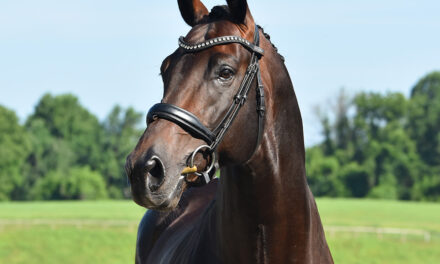June 2001
If you are new to horses, or if you are short on time or cash, and have yet to ride horses competitively, local hunter/jumper shows are your best option.
In increasingly suburbanized Maryland, hunter/jumper stables and shows (which require less open land for training and competing) are thriving, offering numerous and affordable competitive opportunities. Plus, there are many options to owning or leasing a horse, as lesson stables often offer their students school horses for showing. An active show stable can usually provide transportation and often even tack, eliminating costly purchases for the rider.
Finding a Place to Show
There is something of a hierarchical structure to horse shows. At the top of the pyramid is the American Horse Shows Association, the governing body for the majority of English disciplines in the United States. AHSA monitors and grades each recognized competition, C, B, A or AA, etc. (shows must meet certain qualifications in order to achieve a rating; the highest quality national shows and also the most difficult shows for which to qualify are ranked in the As), and provides the rules regarding drugs, competitor status and horse gradings.
Locally, below the AHSA is the Maryland Horse Shows Association, the regional chapter for AHSA. The MHSA can independently recognize and grade shows. Shows approved by MHSA take place from Charlottesville, VA, to Dillsburg, PA, and feature everything from breeding classes to side saddle classes. The emphasis is on serving the needs of its members, and investing in the future of horse showing. Because some of its approved shows take place out of state, MHSA features a Maryland-resident awards program, in addition to the year end high score awards. This helps the Maryland residents who aren’t able to travel far and wide for quality shows.
County and regional show associations, such as the Baltimore County Horse Shows Association, Howard County Horse Shows Association, Harford County Horse Shows Association, Combined Eastern Horse Shows Association, etc., offer a variety of MHSA or AHSA and non-rated shows and classes, and often work cooperatively to cross point shows. They offer their membership a variety of equitation, hunter and jumper options with points for year end awards. Members compete on their own horses. Some members own their own horses, others lease or are asked to ride them by the owners. Still others may compete using a particular horse owned by a lesson stable.
Frequently, horse showing becomes a family activity. Both the Southern Maryland Horse Show Association and the Maryland Saddle Association offer classes that meet the needs of the family – including western classes. These shows are wonderful for kids just starting their show careers, or for parents returning after a long hiatus.
The WBTA (Washington Bridle Trails Association) shows, all of which are held at Meadowbrook, and the UPCO series, which are held at a variety of large lesson stables, such as Potomac Horse Center, enable lesson students to compete actively and accumulate points using lesson horses, often providing a rider’s first taste of showing. Both series also offer classes for local riders to use for horses gaining mileage for the AHSA “A” circuit, and affordable, quality competition for those whose goals don’t include the “A” circuit, but are looking for a challenge. WBTA, which was founded in 1940, has seen the Washington horse scene change over the decades, but has remained true to its goals of giving a boost to the beginner, and a place to school the green horse.
The National Capital Equitation League offers perhaps one of the more unique series for junior riders in the state. Patterned after the intercollegiate circuits, NCEL member teams compete on horses provided by the host stable. After a random draw, the rider has two minutes to get acquainted with the horse on the flat, then receive 2 practice fences in the jumping classes. By riding a variety of horses, riders quickly hone their skills. Each meet closes with a finale class in which two riders for each team, picked by lottery, complete on the flat with and without irons and over fences, and must answer a random question on horsemanship (chosen from a packet distributed to all competitors at the beginning of the show season). The season finale brings all the teams together to compete on their own horses. The year end banquet awards team and individual standings in the League. The League is an attractive option for riders who don’t own their own horse and want to ride at one of the many lesson stables which participate.
With all the emphasis on junior riders, adult amateurs sometimes feel adrift, so Ariat International stepped in and organized the Ariat National Adult Medal Program, which was inaugurated in 1995. After a series of regional competitions, the finalists all gather at the Capital Challenge Horse Show at the Prince George’s Equestrian Center. The equitation program was designed to provide national rankings and competitions for the adults, and to provide encouragement and support for all amateur members of the AHSA and the Canadian Equestrian federation who are eligible to compete in the adult amateur division.
Lots of Choices
Just because they are “locals” doesn’t mean that they aren’t “real” shows. “The schooling shows around here are all very competitive,” explains “A” circuit trainer Ginny Edwards (Hidden Hollow Farm, Poolesville). “Maryland and Virginia have a very high caliber of horses, riders, and trainers. When these riders go anywhere else in the country, they do very well.”
Agrees Nancy Faulkner (Country Comfort Farm, St. Michaels): “The whole state of Maryland is just incredible for competition. People often think it is New York and New Jersey that have it, but here I can choose from 2 “A” rated and one “B” rated show in the same weekend, equal distances from me. There are excellent “B” rated series that are very strong, competitively.”











